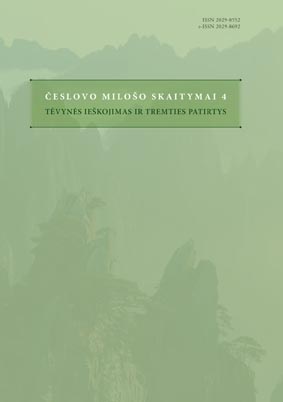Vaizduotė esė erdvėje – Česlovas Milošas ir Paulas De Manas
The Imagination Space of Essay – Czesław Miłosz and Paul de Man
Author(s): Asija KovtunSubject(s): Literary Texts
Published by: Vytauto Didžiojo Universitetas
Keywords: vaizduotė; kalba; esė; struktūra; reikšmė; tekstas; creativity; language; essay; structure; meaning; text
Summary/Abstract: The article aims to draw possible parallels between the ideas of one of the outstanding deconstruction theorists, Paul de Man, who verifies text harmony by algebraically disjointing it and an outstanding figure among the creators of the twentieth century, Czesław Miłosz, whose text demonstrates perfect synthesis. From the point of view of different researches based upon the aspects of post-structuralism language is regarded to be a rather creative process. The structures of language are expected to reveal the embodiment of the meaning/sense of any text when in correlation with the imagination. P. de Man’s (1919-1983) deconstruction may serve to solve the problem of imagination in essay. P. de Man’s ideas may be interpreted through the analysis of the relationship between language and the creator. Cz. Miłosz’s essay Roadside Doggy is the best reflection of language construct used by the writers. Essayism is a special quality of contemporary culture. The union of philosophy, literature and science can be argued to be present here. The space of text unites cultural, social, linguistic and mental features of a creator. Text strives to the achievement of two goals – the dialogue with the reader and the monologue of the author with himself and the search for the inner “I”. In the genre of essay, these relationships are directed to the self-revelation and the self-identification of a personality. The authorial “I” in this genre is treated as being located beyond the common, the norm, the boundaries. One may remark that the reality with its details reflected in an essay confirms the temporariness of the imagination; this may be the fundament for the freedom of interpretation. In essay, the subjectivity of an artist acquires independent creative meaning. Multiple meaningful layers of the sense constitute one of the conditions upon essayist creativity.
Journal: Česlovo Milošo skaitymai
- Issue Year: 2011
- Issue No: 4
- Page Range: 134-139
- Page Count: 6
- Language: Lithuanian

